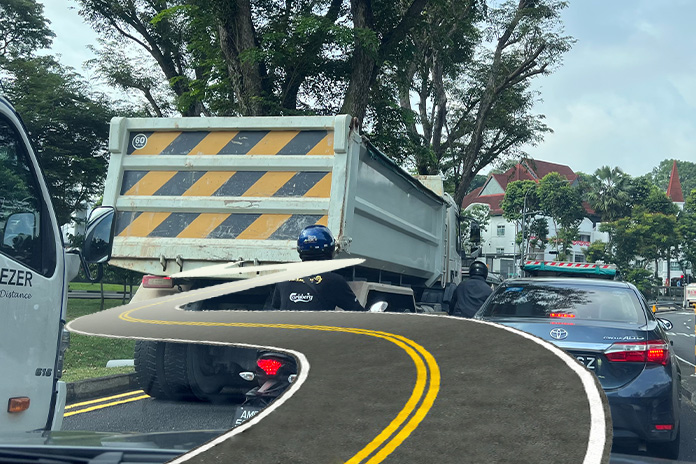
WE use the roads on a regular basis. It’s the network of tarmacked arteries that connects countries, cities, neighbourhoods and people.
Even with the working environment changing to incorporate more work from home practices, people will still need the road for business or leisure.
Statistics show that daily, 3,287 people die in car accidents worldwide. And between 20 and 25 million people are left injured or disabled.
Globally, more than half of all road traffic deaths involve vulnerable road users — children and the elderly.
Children do not fully understand the dangers of the road and they are physically smaller and harder to spot.
The elderly move slower (without realising it, sometimes) and will jaywalk or find the shortest route across the road, resulting in half of all pedestrian fatalities. And in an ageing society like Singapore’s that’s going to be a growing concern.
In Singapore, there were 5,473 road accidents involving injuries in 2020, with 85 deaths. In the same period, motorcyclists made up 63% of the fatalities. Some 3,400 motorcyclist and pillion riders sustained injuries in 2020.
ALSO READ: Starting a business with little capital
Covid had an influence on these figures since the roads were used less frequently during the circuit breaker periods. Contrasting these figures, before covid, the number of accidents involving motorcycles exceeded 4,500 in 2019, and the number of motorcyclists and pillion riders injured crossed 5,000.
As more cyclists took to the roads — be it for exercise or to battle the surging cost of living — the number of accidents also went up, from over 400 in 2019 to more than 550 in 2020.
Is Road Safety At A Crossroads?
Since the roads are a constant factor in our lives, why aren’t we taught more about how to interact with it from young?
Besides looking right and left, and again to the right so you’ll never ever get run over, teach children the highway code.
We learn the alphabet and mathematics when we are young so that they become hardwired into our brain; to help us communicate and calculate. And we learn many other things which, for most of us, are difficult to comprehend, and ironically are seldom — if ever — used in real life.
Why not add the highway code to the things to learn since everyone will use the road be it as a motorist, cyclist, passenger or pedestrian?
It’s always useful to understand how things work and understand the logic of the flow.
Drive And Ride Defensively
Require young drivers to have regular defensive driving lessons, so they realise their own capabilities and just how far they can push their vehicles. With electric cars becoming more evident on the roads, first-time drivers may not realise just how quickly it picks up speed. Not a lesson you’d want to learn in a rental car.
ALSO READ: Business battles on several fronts
The way cyclists hog lanes, and motorcyclists split lanes, or pedestrians walk inconsiderately and trucks occupy too many lanes on a highway and slow drivers crawl in the overtaking lane, there are many aspects of road use that have clearly not sunk in.
Bicycles are a worrying lot to deal with, especially since it might be the common mode of transportation for youngsters. While many try to keep to the road rules, which they are probably not entirely familiar with, there are those who will assert their presence by riding abreast in heavy traffic, taking unnecessary risks or riding in the bus lane, disregarding the bus on their tail.
I’m not a big fan of bus lanes system since it deprives other vehicles of a lane during peak hours, forcing you into a darting dance in and out of gaps in the bus lanes to make a turn. So, it’s quite amusing to watch a bus crawling behind a bicycle. Are cyclists penalised the same way a driver of a car or a motorbike rider would be when they use the bus lane during peak hours?
The way cyclists zip across pedestrian crossings, without bothering to slow down, is an accident waiting to happen. And has probably happened many times. Sometimes a pile up occurs at a pedestrian crossing when the motorist in front jams on the brakes to avoid a speeding bicycle cutting across. And by the time the drivers are out to assess the situation, the culprit is long gone.
Would a little more schooling in road safety in school help to hardwire some of these key messages that will be useful through life?



















